The name Ha Say Fu means Four Lower Tigers. This Hung Gar style comes from a village of the same name in Southern China.
The popular style of Hung Gar, made famous by Wong Fei Hung, is well known for its sets such as: Fu Hok Sheung Ying Kuen (Tiger/Crane Fist Set), Ng Ying Kuen (Five Animal Fist Set) and Sup Ying Kuen (Ten Form Fist Set). Ha Say Fu's curriculum differs from the more popular Canton Hung Gar. There is no overlap of sets between the two styles of Hung Gar. While Canton begins with the dragon, Ha Say Fu ends with it.
Like the Hung Gar style, Ha Say Fu Village Hung Gar also has five animals. Each animal has its own respective set, while in Canton Hung Gar all five animals are used in each set. This means only five handsets, plus one two man sparring set, are taught in Ha Say Fu. Each set has a different focus, but the order in which the animals are taught differs from Canton Hung Gar. In Hung Gar the order is: Dragon, Snake, Tiger, Leopard and Crane. In Ha Say Fu, Leopard is taught first, followed by Tiger, Snake, Crane and finally the Dragon. Every set relies heavily on the Yee Gee Kim Yeung Ma (Pigeon Toe Stance).
The pictures below are listed in the order of the Ha Say Fu style with the Canton Hung Gar style's version of the animals to the right.
Leopard/Pao Ying
The Leopard is the first set taught in the Ha Say Fu curriculum (Pao Ying Kuen). Extension of power and energy to the arms, forearms, hands, fists, and fingertips are utilized in this set. Forearm-strikes to a pressure point on the opponent's upper arm are used. Vertical punches (Yuet Gee Choi) as well as elbow-strikes, finger jabs, claw-, palm- and backfist-strikes are also used.
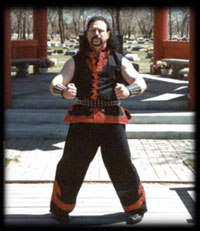


Tiger/Fu Ying
The Tiger is the second animal introduced in the Ha Say Fu curriculum (Fu Ying Kuen). This is a very powerful set with a lot of focus on back knuckle strikes and Tiger Claw techniques, using a raking and squeezing motion. A hyper extended wrist hitting with the knuckles rather than the back of the hand characterizes the back knuckle techniques. Like the other Ha Say Fu sets the Yee Gee Kim Yeung Ma is very predominant.
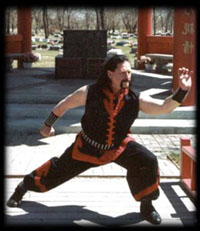

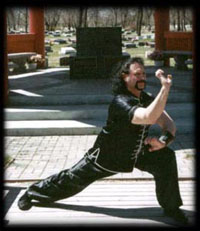
Snake/Sare Ying
The Snake is the third animal introduced in the Ha Say Fu curriculum (Sare Ying Kuen). It concentrates on fluent footwork (Sare Bo). This is a slithering, or shifting side to side, of the Bow and Arrow Stance (Gee Ng Ma). The Snake utilizes such hand techniques as Two-Finger jab (Sare Soeun - Snake's Tongue), Snake's Mouth grab (Sare Hao) and Snake Head fist (Sare Tao Kuen).
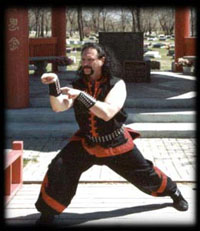

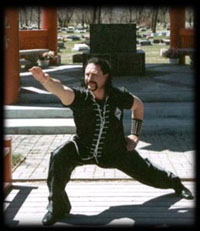
Crane/Hok Ying
The Crane is the fourth animal introduced in the Ha Say Fu curriculum (Hok Ying Kuen). This animal is used to develop balance in the legs and develop stability. A majority of the set is performed on one leg in the Crane Stance (Hok Jong Ma). The main hand techniques are Crane Claw (Hok Jow) and Crane's Beak (Hok Jeur). The Crane's Beak is used to strike vulnerable areas of the body while the Crane Claw is used much like the Eagle Claw (Ying Jow) style's Three Fingered Grab and Seizing technique.



Dragon/Long Ying
The Dragon is the last animal introduced in the Ha Say Fu curriculum (Loong Ying Kuen), and concentrates on two main hand techniques: Dragon Head fist (Loong Tao Kuen) and Dragon Claw (Loong Jow). The Dragon Head fist has the middle knuckle protruding much like the Phoenix Eye Strike of other styles, while the Dragon Claw focuses on straight fingers (extended), tension on the fingertips. This technique is used for clawing and raking.
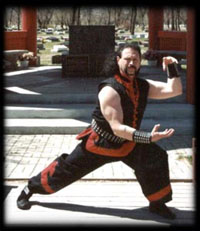


The hand techniques are also very different from Canton Hung Gar, making this style of Hung Gar different in many ways. There are also many weapons in Ha Say Fu's arsenal, making it a well-rounded style.
Ha Say Fu is a village style and that might explain the style's great use of farm implements such as the Nine-pointed rake, Thunder- hoe, and Gen (similar to the Okinawan Sai). Rural farmers lacked the finances to purchase expensive weapons, so they had to make due with what was readily available.
Ha Say Fu also has a distinct opening/closing salute that differs from Canton Hung Gar.
Ha Say FuSalute
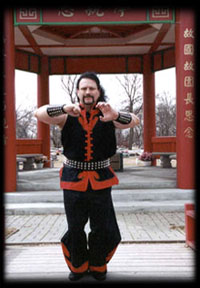
Canton Hung GarSalute
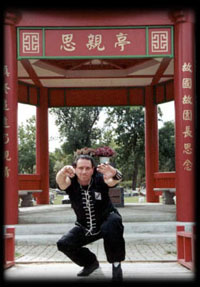
The basic punch is used differently in Ha Say Fu. Rather than wrapping the thumb in against the fingers like Canton's flat punch (Ping Choi), Ha Say Fu uses a Vertical- or Sun punch (Yuet Gee Choi). The thumb is placed tightly against the top of the fist like the Canton Hung Gar's Leopard fist (Pao Sao) with the arm fully extended rather than keeping it slightly bent as in the Canton style.
Ha Say Fu Basic Punch

Canton Basic Punch

Like Canton Hung Gar, Ha Say Fu places a lot of emphasis on building a very strong foundation. But rather than training the Four Level Horse stance (Say Ping Ma), Ha Say Fu places great emphasis on the uses the Pigeon Toed stance (Yee Gee Kim Yeung Ma). In this stance the toes are pointed inward and are closer together than the heels, resembling the Chinese characters Yee Gee or "two", Kim Yeung or "to draw in" and Ma or "stance". Like the square Horse Stance the Yee Gee Kim Yeung Ma trains the Hei Shun Tan Tien (Lowering the Center of Gravity).
Ha Say Fu's Yee Gee Kim Yeung Ma

Canton's Traditional Square Horse Say Ping Ma

It is believed that Ha Say Fu Hung Gar may be the closest style to what the monk Gee Sin Sim See practised. Ha Say Fu is deeply rooted in traditional Shaolin/Sil Lum. If indeed Ha Say Fu Hung Gar was the original style of Gee Sin Sim See, records have been lost, it was far too long ago and was not properly documented. Ha Say Fu's lineage is very cloudy and most of the tree was lost. Its last recorded master was Leung Wah Chew Dai Si Gung (Great Grandmaster).

